 Effective arthropod pest management in commercial floral crops requires that pests be detected in a timely manner through systematic scouting and that appropriate control measures be applied as conditions warrant. Control measures may include economical combinations of cultural controls, physical controls, biological controls, and chemical controls. This 9-page guide is a summary of chemical control measures that are presently available to commercial flower producers in Florida and includes beneficial nematode and microbial insecticides that also are components of biological control. Written by James F. Price and Curtis Nagle, and published by the UF Department of Entomology and Nematology, November 2012.
Effective arthropod pest management in commercial floral crops requires that pests be detected in a timely manner through systematic scouting and that appropriate control measures be applied as conditions warrant. Control measures may include economical combinations of cultural controls, physical controls, biological controls, and chemical controls. This 9-page guide is a summary of chemical control measures that are presently available to commercial flower producers in Florida and includes beneficial nematode and microbial insecticides that also are components of biological control. Written by James F. Price and Curtis Nagle, and published by the UF Department of Entomology and Nematology, November 2012.
http://edis.ifas.ufl.edu/ig162
Category: Crops
Understanding and Applying Chelated Fertilizers Effectively Based on Soil pH (HS1208)
 Plant nutrients are one of the environmental factors essential for crop growth and development. Nutrient management is crucial for optimal productivity in commercial crop production. Those nutrients in concentrations of ≤ 100 parts per million (ppm) in plant tissues are described as micronutrients and include iron (Fe), zinc (Zn), manganese (Mn), copper (Cu), boron (B), chlorine (Cl), molybdenum (Mo), and nickel (Ni). Micronutrients such as Fe, Mn, Zn, and Cu are easily oxidized or precipitated in soil, and their utilization is, therefore, not very efficient. Chelated fertilizers have been developed to increase micronutrient utilization efficiency. This 5-page fact sheet provides an overview of chelated fertilizers and considerations for their use to county Extension faculty, growers, and students who are interested in commercial crop production. Written by Guodong Liu, Edward Hanlon, and Yuncong Li, and published by the UF Department of Horticultural Sciences, November 2012.
Plant nutrients are one of the environmental factors essential for crop growth and development. Nutrient management is crucial for optimal productivity in commercial crop production. Those nutrients in concentrations of ≤ 100 parts per million (ppm) in plant tissues are described as micronutrients and include iron (Fe), zinc (Zn), manganese (Mn), copper (Cu), boron (B), chlorine (Cl), molybdenum (Mo), and nickel (Ni). Micronutrients such as Fe, Mn, Zn, and Cu are easily oxidized or precipitated in soil, and their utilization is, therefore, not very efficient. Chelated fertilizers have been developed to increase micronutrient utilization efficiency. This 5-page fact sheet provides an overview of chelated fertilizers and considerations for their use to county Extension faculty, growers, and students who are interested in commercial crop production. Written by Guodong Liu, Edward Hanlon, and Yuncong Li, and published by the UF Department of Horticultural Sciences, November 2012.
http://edis.ifas.ufl.edu/hs1208
Rootstocks for Florida Stone Fruit (HS1110/HS366)
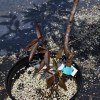 Rootstocks have been used in many tree fruit systems to provide growth advantages or pest or disease resistance without affecting productivity and fruit quality. In Florida, stone fruit are grown on rootstocks that specifically provide pest resistance to the peach root-knot nematode. Although several root-knot nematode-resistant rootstocks are available for stone fruit grown in other locations and climates, ‘Flordaguard’ peach rootstock is currently recommended for stone fruit production in Florida. This 5-page fact sheet was written by M. Olmstead, J. Chaparro, and J. Ferguson, and published by the UF Department of Horticultural Sciences, November 2012.
Rootstocks have been used in many tree fruit systems to provide growth advantages or pest or disease resistance without affecting productivity and fruit quality. In Florida, stone fruit are grown on rootstocks that specifically provide pest resistance to the peach root-knot nematode. Although several root-knot nematode-resistant rootstocks are available for stone fruit grown in other locations and climates, ‘Flordaguard’ peach rootstock is currently recommended for stone fruit production in Florida. This 5-page fact sheet was written by M. Olmstead, J. Chaparro, and J. Ferguson, and published by the UF Department of Horticultural Sciences, November 2012.
http://edis.ifas.ufl.edu/hs366
Salmonella y Escherichia coli enteropatogena en el ambiente de produccion de cultivos: fuentes potenciales, supervivencia y gestion (SL375Span/SS577)
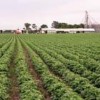 El objetivo de esta publicación EDIS es poner en evidencia los descubrimientos recientes que se enfocan en la ecología de los patógenos humanos en el área de producción de cultivo. Una mejor comprensión de cómo los patógenos persisten fuera de los huéspedes animales en el agua para la agricultura, en el suelo y en las plantas, tendrá grandes impactos en el manejo y procesamiento de los productos mismos, empezando desde el productor y hasta el consumidor. This 3-page fact sheet was written by Massimiliano Marvasi, Max Teplitski, Andrée George, and George Hochmuth, and published by the UF Department of Soil and Water Science, November 2012.
El objetivo de esta publicación EDIS es poner en evidencia los descubrimientos recientes que se enfocan en la ecología de los patógenos humanos en el área de producción de cultivo. Una mejor comprensión de cómo los patógenos persisten fuera de los huéspedes animales en el agua para la agricultura, en el suelo y en las plantas, tendrá grandes impactos en el manejo y procesamiento de los productos mismos, empezando desde el productor y hasta el consumidor. This 3-page fact sheet was written by Massimiliano Marvasi, Max Teplitski, Andrée George, and George Hochmuth, and published by the UF Department of Soil and Water Science, November 2012.
http://edis.ifas.ufl.edu/ss577
Diseases of Bitter Melon in South Florida (PP300)
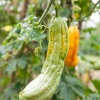 Bitter melon, a tropical and subtropical cucurbit, is widely grown in Asia, Africa, and the Caribbean for its edible fruit. Rich in vitamins A and C, iron, and phosphorus, it contains a compound (charantin) that has been used to lower blood sugar levels to treat diabetes. Two major types of bitter melon, Chinese and Indian, are grown in South Florida year-round. This publication describes common diseases and provides recommendations for their control. This 3-page fact sheet was written by Shouan Zhang, Mary Lamberts, and Gene McAvoy, and published by the UF Department of Plant Pathology, October 2012.
Bitter melon, a tropical and subtropical cucurbit, is widely grown in Asia, Africa, and the Caribbean for its edible fruit. Rich in vitamins A and C, iron, and phosphorus, it contains a compound (charantin) that has been used to lower blood sugar levels to treat diabetes. Two major types of bitter melon, Chinese and Indian, are grown in South Florida year-round. This publication describes common diseases and provides recommendations for their control. This 3-page fact sheet was written by Shouan Zhang, Mary Lamberts, and Gene McAvoy, and published by the UF Department of Plant Pathology, October 2012.
http://edis.ifas.ufl.edu/pp300
Soil pH Range for Optimum Commercial Vegetable Production (HS1207)
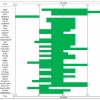 Soil pH affects nutrient bioavailability by controlling the chemical forms of nutrients. This 11-page fact sheet provides information about soil pH basics to commercial growers, county Extension agents, and college students specializing in vegetable production. Written by Guodong Liu and Edward Hanlon, and published by the UF Department of Horticultural Sciences, October 2012.
Soil pH affects nutrient bioavailability by controlling the chemical forms of nutrients. This 11-page fact sheet provides information about soil pH basics to commercial growers, county Extension agents, and college students specializing in vegetable production. Written by Guodong Liu and Edward Hanlon, and published by the UF Department of Horticultural Sciences, October 2012.
http://edis.ifas.ufl.edu/hs1207
Una mirada a la produccion, el comercio y el consumo de papaya a nivel mundial (FE917)
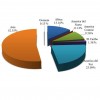 Este artículo provee información referente a las tendencias globales en cuanto a producción, comercio mundial y los países exportadores e importadores de papaya. Written by Edward A. Evans and Fredy H. Ballen, and published by the UF Department of Food and Resource Economics, October 2012.
Este artículo provee información referente a las tendencias globales en cuanto a producción, comercio mundial y los países exportadores e importadores de papaya. Written by Edward A. Evans and Fredy H. Ballen, and published by the UF Department of Food and Resource Economics, October 2012.
http://edis.ifas.ufl.edu/fe917
Florida Crop/Pest Management Profiles: Snap Beans (CIR1231/PI032)
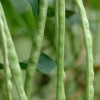 In 2009-2010, Florida growers produced 193.2 million pounds of snap beans, with a value of $0.69 per pound and a total value of $135 million. Snap beans were planted on 36,400 acres, and 32,200 acres were harvested, yielding an average of 6,000 pounds per acre. This 18-page fact sheet was written by W.M. Elwakil and Mark A. Mossler, and published by the UF Department of Agronomy, October 2012.
In 2009-2010, Florida growers produced 193.2 million pounds of snap beans, with a value of $0.69 per pound and a total value of $135 million. Snap beans were planted on 36,400 acres, and 32,200 acres were harvested, yielding an average of 6,000 pounds per acre. This 18-page fact sheet was written by W.M. Elwakil and Mark A. Mossler, and published by the UF Department of Agronomy, October 2012.
http://edis.ifas.ufl.edu/pi032
Salmonella and Pathogenic E. coli in the Crop Production Environment: Potential Sources, Survival, and Management (SL375/SS576)
 Over the last two decades, at least a dozen major outbreaks of gastroenteritis caused by non-typhoidal Salmonella or enterovirulent E. coli have been linked to the consumption of sprouts, nuts, and fresh (or minimally processed) fruits and vegetables. These outbreaks caught scientists and the public off guard because these pathogens were not previously considered “plant-associated.” This 3-page fact sheet highlights recent discoveries that focus on the ecology of human pathogens in the crop production environment. A better understanding of how pathogens persist outside of animal hosts in agricultural water, soils, and plants will have major impacts on managing produce safety from “farm to fork.” Written by Max Teplitski, Andree George, and George Hochmuth, and published by the UF Department of Soil and Water Science, October 2012.
Over the last two decades, at least a dozen major outbreaks of gastroenteritis caused by non-typhoidal Salmonella or enterovirulent E. coli have been linked to the consumption of sprouts, nuts, and fresh (or minimally processed) fruits and vegetables. These outbreaks caught scientists and the public off guard because these pathogens were not previously considered “plant-associated.” This 3-page fact sheet highlights recent discoveries that focus on the ecology of human pathogens in the crop production environment. A better understanding of how pathogens persist outside of animal hosts in agricultural water, soils, and plants will have major impacts on managing produce safety from “farm to fork.” Written by Max Teplitski, Andree George, and George Hochmuth, and published by the UF Department of Soil and Water Science, October 2012.
http://edis.ifas.ufl.edu/ss576
Fertigation for Vegetables: A Practical Guide for Small Fields (HS1206)
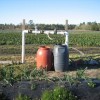
More and more farmers are growing small crops of fruits and vegetables for specialty local markets. They commonly grow several crops at different stages of development at the same time so they have a variety of produce to sell to customers. This forces farmers to make several fertilizer calculations because of their diverse crop demands, because water and nutrient requirements vary according to the crop and stage of development. This 7-page fact sheet helps growers correctly interpret fertilizer recommendations and calculate accurate fertilizer amounts to be used based on crop nutrient requirements. Written by Jim DeValerio, David Nistler, Robert Hochmuth, and Eric Simonne, and published by the UF Department of Horticultural Sciences, October 2012.
http://edis.ifas.ufl.edu/hs1206
Pepper Fruit Fly Atherigona orientalis (Schiner) (Insecta: Diptera: Muscidae) (EENY539/IN948)
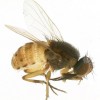 Although it is commonly referred to as the pepper fruit fly or tomato fruit fly, Atherigona orientalis is not a true fruit fly in the family Tephritidae, but rather a member of the Muscidae, the same family to which the common house fly belongs. It is found in most tropical and subtropical areas of the world and is usually considered a secondary pest or “trash fly.” But it can sometimes be a primary pest of certain agricultural crops, most notably plants in the family Solanaceae. This 4-page fact sheet was written by Kenneth L. Hibbard and William A. Overholt, and published by the UF Department of Entomology and Nematology, September 2012.
Although it is commonly referred to as the pepper fruit fly or tomato fruit fly, Atherigona orientalis is not a true fruit fly in the family Tephritidae, but rather a member of the Muscidae, the same family to which the common house fly belongs. It is found in most tropical and subtropical areas of the world and is usually considered a secondary pest or “trash fly.” But it can sometimes be a primary pest of certain agricultural crops, most notably plants in the family Solanaceae. This 4-page fact sheet was written by Kenneth L. Hibbard and William A. Overholt, and published by the UF Department of Entomology and Nematology, September 2012.
http://edis.ifas.ufl.edu/in948
Cactus Moth, Cactoblastis cactorum (Berg) (Insecta: Lepidoptera: Pyralidae) (EENY056/IN213)
 Since its arrival in the Florida Keys in 1989, this invasive species has become a serious threat to the diversity and abundance of Opuntia cactus in North America. The spread of this moth raises concerns about harm to rare opuntioid species (prickly pear and related cacti), the endangerment of wild opuntioids in the southwestern United States and Mexico and the consequent effects on entire desert ecosystems and economic hardship for communities in Mexico that cultivate and sell Opuntia. This 5-page fact sheet was written by D. H. Habeck, F. D. Bennett, and Christine Miller, and published by the UF Department of Entomology and Nematology, September 2012.
Since its arrival in the Florida Keys in 1989, this invasive species has become a serious threat to the diversity and abundance of Opuntia cactus in North America. The spread of this moth raises concerns about harm to rare opuntioid species (prickly pear and related cacti), the endangerment of wild opuntioids in the southwestern United States and Mexico and the consequent effects on entire desert ecosystems and economic hardship for communities in Mexico that cultivate and sell Opuntia. This 5-page fact sheet was written by D. H. Habeck, F. D. Bennett, and Christine Miller, and published by the UF Department of Entomology and Nematology, September 2012.
http://edis.ifas.ufl.edu/in213
Cultivos en asocio, diversidad de cultivos y manejo integrado de plagas (ENY862S/IN932)
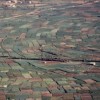 El cultivo en asocio (o cultivo intercalado) es una práctica en donde se siembran diversos cultivos en un mismo campo. Adicionalmente plantas que no son cultivos, tales como las malezas, cultivos rastreros o de cobertura, así como plantas del hábitat, se pueden combinar en el espacio y tiempo para influir en el número de plagas o artrópodos benéficos en un cultivo principal. This 7-page fact sheet was written by Hugh Smith y Oscar Liburd. Traducido por Ana Lucrecia MacVean, and published by the UF Department of Entomology and Nematology, June 2012.
El cultivo en asocio (o cultivo intercalado) es una práctica en donde se siembran diversos cultivos en un mismo campo. Adicionalmente plantas que no son cultivos, tales como las malezas, cultivos rastreros o de cobertura, así como plantas del hábitat, se pueden combinar en el espacio y tiempo para influir en el número de plagas o artrópodos benéficos en un cultivo principal. This 7-page fact sheet was written by Hugh Smith y Oscar Liburd. Traducido por Ana Lucrecia MacVean, and published by the UF Department of Entomology and Nematology, June 2012.
http://edis.ifas.ufl.edu/in932
An Overview of US Papaya Production, Trade, and Consumption (FE914)
![fe914 Figure 1. US fresh papaya imports by origin, 2002–2011 (metric tonnes [t]). Source: USDA/FAS (2012).](http://edis-news.ifas.ufl.edu/wp-content/uploads/2012/09/fe914-100x100.jpg) The United States produces close to 14,000 t of papaya annually. Consumption of the fruit is on the upswing and the development of new cultivars tolerant to the Papaya Ring Spot Virus encourage many growers in South Florida to taking a second look at producing papaya for the domestic market. This 8-page fact sheet provides information on domestic trends in the production and trade of fresh papaya in the U.S. Also included is a price analysis at the wholesale level for representative markets on the US East and West Coasts. Written by Edward A. Evans, Fredy H. Ballen, and Jonathan H. Crane, and published by the UF Department of Food and Resource Economics, September 2012.
The United States produces close to 14,000 t of papaya annually. Consumption of the fruit is on the upswing and the development of new cultivars tolerant to the Papaya Ring Spot Virus encourage many growers in South Florida to taking a second look at producing papaya for the domestic market. This 8-page fact sheet provides information on domestic trends in the production and trade of fresh papaya in the U.S. Also included is a price analysis at the wholesale level for representative markets on the US East and West Coasts. Written by Edward A. Evans, Fredy H. Ballen, and Jonathan H. Crane, and published by the UF Department of Food and Resource Economics, September 2012.
http://edis.ifas.ufl.edu/fe914
Solutions for Managing Tomato Culls in Florida Tomato Packinghouses (SL371/SS572)
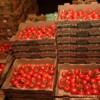 Florida is the single largest producer of fresh-market tomatoes in the United States. Driven by urbanization and generation of large amounts of tomato culls, tomato packers in Florida often struggle to find ways to dispose of culls generated during the cleaning and sanitizing of tomatoes. This 5-page fact sheet provides guidelines for appropriate management practices to increase the use of culls produced in tomato packinghouses in Florida. Written by Gurpal Toor, Maninder Chahal, and Bielinski Santos, and published by the UF Department of Soil and Water Science, September 2012.
Florida is the single largest producer of fresh-market tomatoes in the United States. Driven by urbanization and generation of large amounts of tomato culls, tomato packers in Florida often struggle to find ways to dispose of culls generated during the cleaning and sanitizing of tomatoes. This 5-page fact sheet provides guidelines for appropriate management practices to increase the use of culls produced in tomato packinghouses in Florida. Written by Gurpal Toor, Maninder Chahal, and Bielinski Santos, and published by the UF Department of Soil and Water Science, September 2012.
http://edis.ifas.ufl.edu/ss572
Production of Miscanthus x giganteus for Biofuel (SSAGR292/AG297)
 The bioenergy industry has primarily used Miscanthus for combustion in power plants. It has desirable properties of low water and ash contents following a dry-down period before harvest. Current research is focused on its potential as a biomass crop for direct combustion and for lignocellulosic conversion to ethanol and other biofuels. This 3-page fact sheet was written by John Erickson, Curtis Rainbolt, Yoana Newman, Lynn Sollenberger, and Zane Helsel, and published by the UF Department of Agronomy, September 2012.
The bioenergy industry has primarily used Miscanthus for combustion in power plants. It has desirable properties of low water and ash contents following a dry-down period before harvest. Current research is focused on its potential as a biomass crop for direct combustion and for lignocellulosic conversion to ethanol and other biofuels. This 3-page fact sheet was written by John Erickson, Curtis Rainbolt, Yoana Newman, Lynn Sollenberger, and Zane Helsel, and published by the UF Department of Agronomy, September 2012.
http://edis.ifas.ufl.edu/ag297
Agricultural Management Options for Climate Variability and Change: High-Residue Cover Crops (AE488)
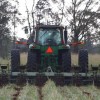 While decision making in agriculture involves many aspects beyond climate, including economics, social factors, and policy considerations, climate-related risks are a primary source of yield and income variability. This 4-page fact sheet focuses on the use of high-biomass winter cover crops to improve production systems. Written by Joel Love, Jed Dillard, Kirk Brock, Daniel Dourte, and Clyde Fraisse, and published by the UF Department of Agricultural and Biological Engineering, August 2012.
While decision making in agriculture involves many aspects beyond climate, including economics, social factors, and policy considerations, climate-related risks are a primary source of yield and income variability. This 4-page fact sheet focuses on the use of high-biomass winter cover crops to improve production systems. Written by Joel Love, Jed Dillard, Kirk Brock, Daniel Dourte, and Clyde Fraisse, and published by the UF Department of Agricultural and Biological Engineering, August 2012.
http://edis.ifas.ufl.edu/ae488
Anthracnose Fruit Rot of Strawberry (PP207/PP130)
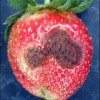 Anthracnose fruit rot is an important disease for strawberry worldwide. Lesions appear as dark, sunken spots on infected fruit. This 4-page fact sheet was written by James C. Mertely and Natalia. A. Peres, and published by the UF Department of Plant Pathology, September 2012.
Anthracnose fruit rot is an important disease for strawberry worldwide. Lesions appear as dark, sunken spots on infected fruit. This 4-page fact sheet was written by James C. Mertely and Natalia. A. Peres, and published by the UF Department of Plant Pathology, September 2012.
http://edis.ifas.ufl.edu/pp130
Colletotrichum Crown Rot (Anthracnose Crown Rot) of Strawberries (PP238/PP156)
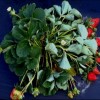 Colletotrichum crown rot is caused by the fungi Colletotrichum gloeosporioides and Colletotrichum fragariae. Both pathogens kill strawberry plants by aggressively invading crown tissue. Crown rot is a serious disease in warm production regions, such as those in the southeastern United States. This 3-page fact sheet was written by Natalia A. Peres and Steven J. MacKenzie, and published by the UF Department of Plant Pathology, September 2012.
Colletotrichum crown rot is caused by the fungi Colletotrichum gloeosporioides and Colletotrichum fragariae. Both pathogens kill strawberry plants by aggressively invading crown tissue. Crown rot is a serious disease in warm production regions, such as those in the southeastern United States. This 3-page fact sheet was written by Natalia A. Peres and Steven J. MacKenzie, and published by the UF Department of Plant Pathology, September 2012.
http://edis.ifas.ufl.edu/pp156
Cogongrass (Imperata cylindrica) Biology, Ecology, and Management in Florida Grazing Lands (SSAGR52/WG202)
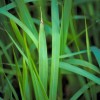 Cogongrass is found on every continent and is considered a weedy pest in 73 countries. In the U.S., cogongrass is found primarily in the Southeast. It was accidentally introduced into Alabama in the early 1900s, and purposely introduced as a potential forage and soil stabilizer in Florida (and other states) in the 1930s and early 1940s. However, soon after investigations began it was realized that cogongrass could be a weedy pest. Since its introduction, cogongrass has spread to nearly every county in Florida. In some cases, it has completely taken over pastures so that it is the only species present. This is a common thread where cogongrass invades; it quickly displaces desirable species and requires intensive management. This 5-page fact sheet was written by B. A. Sellers, J. A. Ferrell, G. E. MacDonald, K. A. Langeland, and S. L. Flory, and published by the UF Department of Agronomy, August 2012.
Cogongrass is found on every continent and is considered a weedy pest in 73 countries. In the U.S., cogongrass is found primarily in the Southeast. It was accidentally introduced into Alabama in the early 1900s, and purposely introduced as a potential forage and soil stabilizer in Florida (and other states) in the 1930s and early 1940s. However, soon after investigations began it was realized that cogongrass could be a weedy pest. Since its introduction, cogongrass has spread to nearly every county in Florida. In some cases, it has completely taken over pastures so that it is the only species present. This is a common thread where cogongrass invades; it quickly displaces desirable species and requires intensive management. This 5-page fact sheet was written by B. A. Sellers, J. A. Ferrell, G. E. MacDonald, K. A. Langeland, and S. L. Flory, and published by the UF Department of Agronomy, August 2012.
http://edis.ifas.ufl.edu/wg202